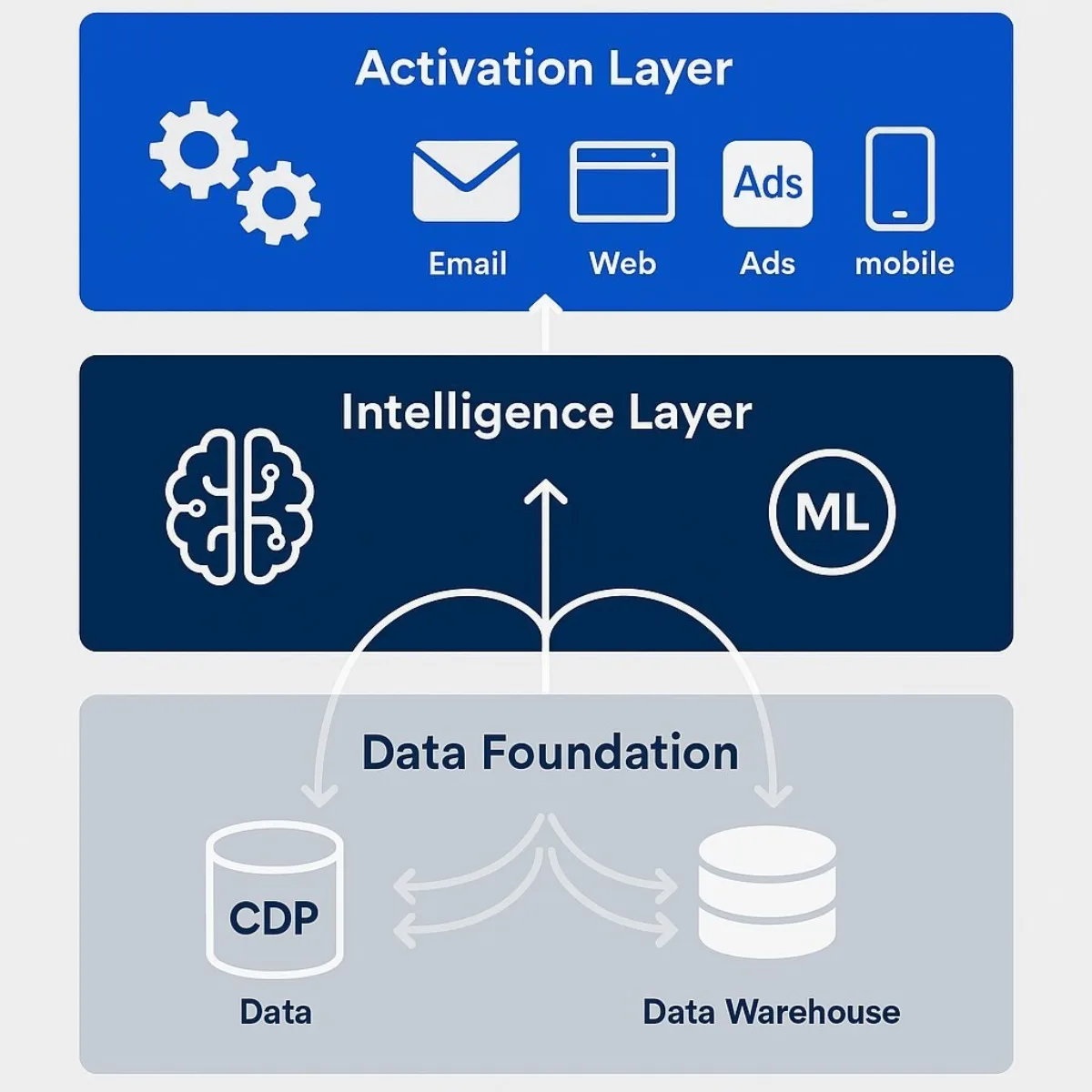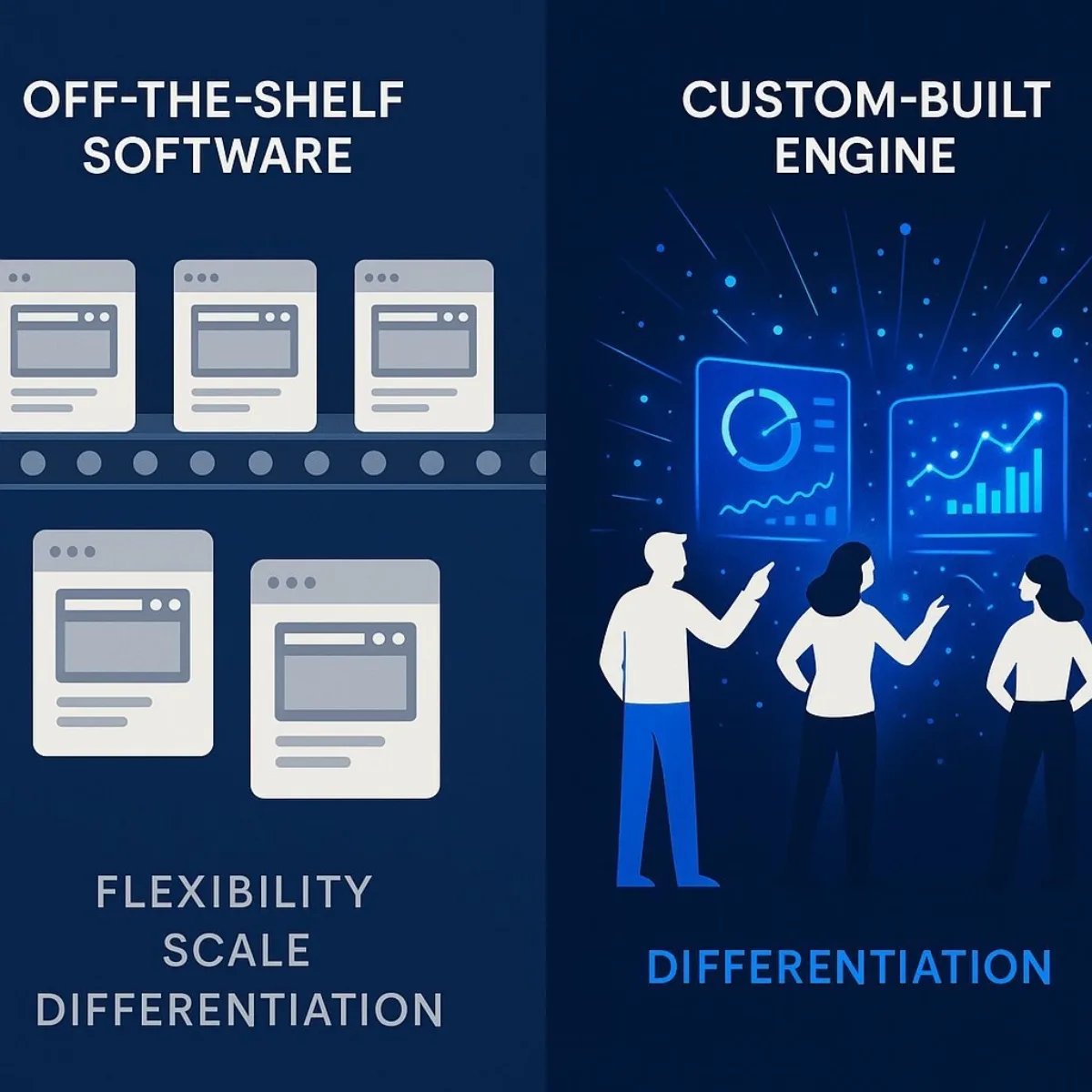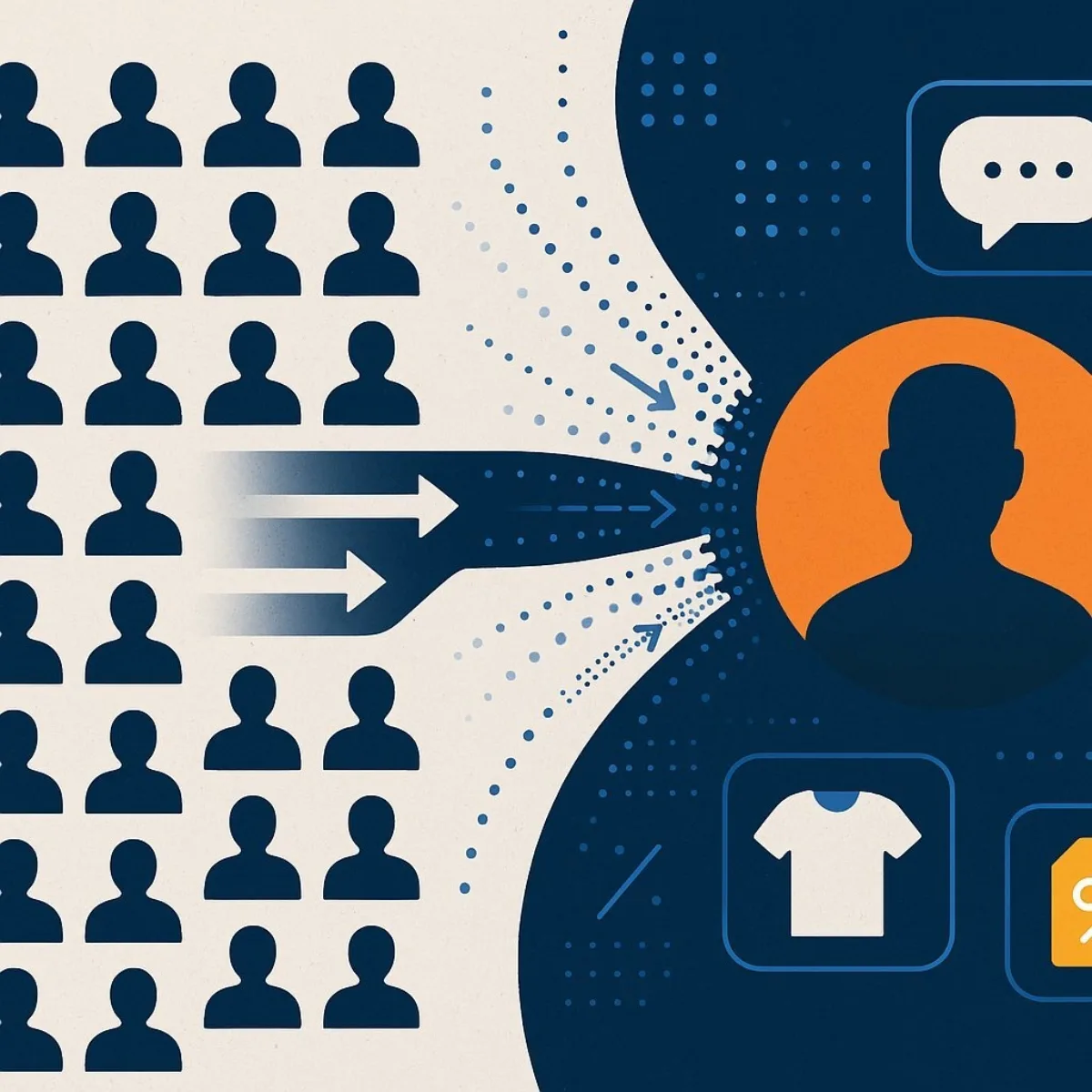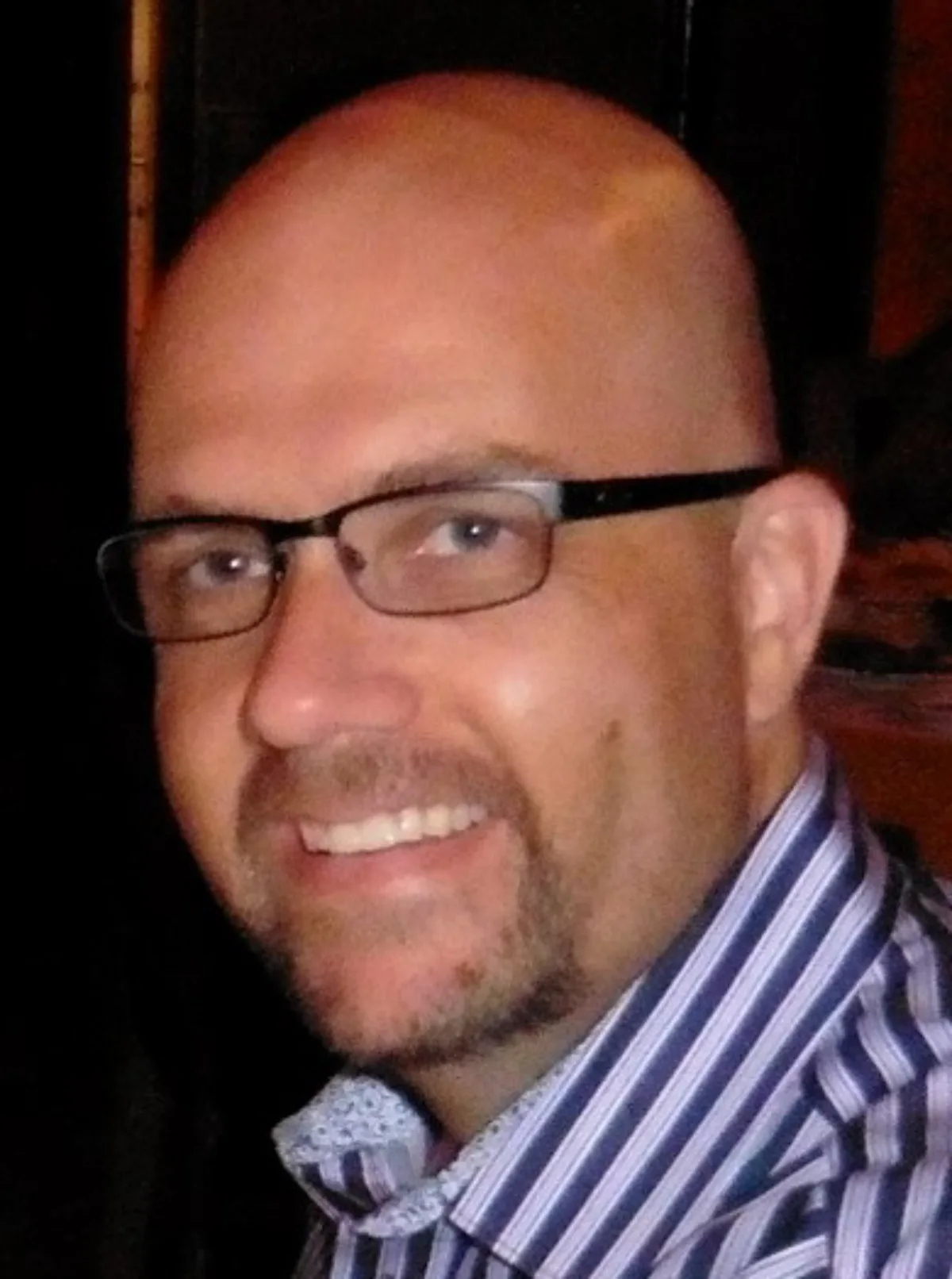
Hyper-Personalization at Scale: The Blueprint for 1-to-1 Customer Experience
October 03, 2025 / Bryan ReynoldsThe Hyper-Personalization Imperative: How to Deliver 1-to-1 Customer Experiences at Scale

Introduction: The Great Disconnect in Customer Experience
There is a jarring disconnect at the heart of modern business. While a commanding 85% of companies believe they provide personalized experiences, a mere 60% of their customers agree. This isn't just a perception gap; it's a chasm of missed opportunity, unrealized revenue, and a direct threat to customer loyalty. It signals a fundamental failure to meet the evolving expectations of a sophisticated B2B and B2C clientele.
In 2025, hyper-personalization is no longer a fringe marketing tactic or a "nice-to-have" feature. It has become the central pillar of a modern growth strategy. It is the engine that powers true 1-to-1 customer experiences at scale, transforming generic, one-size-fits-all interactions into deeply relevant, context-aware dialogues that drive revenue and build an unassailable competitive advantage. This guide is a strategic blueprint for Chief Marketing and Chief Digital Officers, answering the critical questions being asked in boardrooms about the ROI, the technology, and the implementation path for this business imperative.
1. Why Is 'Good Enough' Personalization Failing Us?
Many organizations are already investing in personalization, yet the results often fall short of expectations. The core issue is that the definition of "personalization" has fundamentally changed. The tactics that were once innovative are now table stakes, and they are no longer sufficient to cut through the noise and capture customer attention.
The Shift from Personalization to Hyper-Personalization
The distinction between yesterday's personalization and today's hyper-personalization is crucial. Basic personalization involves using static data points, such as inserting a customer's first name into an email subject line—a tactic that, while still effective to a degree, is now commonplace. Hyper-personalization, in contrast, is a dynamic, real-time discipline. It leverages a continuous stream of behavioral and contextual data to predict customer needs and instantly tailor experiences. This means dynamically altering website content based on browsing history, predicting the next best action in a customer journey, and delivering a message that feels uniquely crafted for an individual's immediate context and needs.
This shift is not happening in a vacuum; it is being driven by rising customer expectations. B2B buyers, in their consumer lives, are conditioned by the sophisticated recommendation engines of Netflix and Amazon. A remarkable 69% of consumers now expect these "Amazon-like" buying experiences in all their interactions, and this expectation bleeds directly into their professional lives. They anticipate that B2B vendors will understand their specific challenges, roles, and buying stages with the same level of precision.
The High Cost of Impersonal Experiences
Failing to meet these elevated expectations comes with a significant cost. An impersonal experience is no longer a neutral event; it is a negative one that actively damages the customer relationship. Data shows that 76% of consumers become frustrated when a brand's website lacks any form of personalization, and 71% feel this frustration with any impersonal experience. This frustration is a leading indicator of churn. A staggering 62% of consumers report that a brand will lose their loyalty if it delivers an un-personalized experience.

In the complex world of B2B sales, where a typical purchase involves an average of nine decision-makers, generic outreach is effectively dead. A one-size-fits-all message fails to resonate with the diverse needs of a CFO, a CTO, and an end-user. As a result, customers are tuning out. Research indicates that 72% of consumers now
only engage with marketing messages that are specifically tailored to their interests.
The gap between what companies think they are delivering and what customers feel they are receiving is more than a simple marketing misstep. When 61% of customers believe they are often treated like numbers rather than individuals, it reveals a deeper issue. This feeling arises when a brand fails to use the information a customer provides—whether explicitly through a form or implicitly through their behavior—to improve their experience. This failure is interpreted not as a technological limitation, but as a lack of care or understanding. It erodes the foundation of the business relationship: trust. The "personalization gap" is, therefore, a trust deficit. It sends a clear message to the customer: "We don't know you, or we don't care enough to use what we know." Closing this trust deficit is the primary strategic objective and the ultimate promise of a well-executed hyper-personalization strategy.
2. What's the Real ROI? Unpacking the Business Case for Hyper-Personalization
For any strategic initiative to gain traction at the executive level, it must be supported by a clear and compelling business case. Hyper-personalization is not a cost center; it is a powerful revenue driver with a measurable impact on profitability, conversion rates, and long-term customer value. The data is unequivocal.
Direct Impact on Revenue and Profitability
The link between personalization and financial performance is well-documented. Fast-growing companies are already leveraging this advantage, generating 40% more of their revenue from personalization than their slower-growing competitors. Across the board, brands that successfully create personalized experiences see revenue increases of 6-10%, a rate that is two to three times higher than those that do not personalize.
This is not merely a correlation; marketing leaders see a direct causal link. An overwhelming 90% of marketers state that personalization directly contributes to business profitability, and 89% report seeing a positive return on investment from their personalization efforts. This widespread consensus underscores that personalization is a reliable and proven lever for financial growth.
Boosting Conversions and Customer Spend
Hyper-personalization has a dramatic effect on key performance indicators throughout the marketing and sales funnel. For B2B companies, personalizing the web experience can lead to an 80% higher conversion rate. Even a seemingly simple tactic like personalizing a call-to-action (CTA) yields outsized results, converting a remarkable 202% better than a generic, one-size-fits-all CTA.
Beyond initial conversion, personalization also increases the value of each customer transaction. A significant 80% of business leaders report that consumers spend more when their experience is personalized, with the average increase in spending ranging from 34% to 38%. Furthermore, targeted campaigns that leverage individual customer data can increase the average order value by as much as 40%.

Enhancing Loyalty and Customer Lifetime Value (CLV)
Perhaps the most significant financial impact of hyper-personalization lies in its ability to foster long-term customer relationships and increase lifetime value. A personalized shopping experience makes customers 60% more likely to become repeat buyers. This is particularly critical in the B2B space, where relationships are paramount and customer acquisition costs are high. In this context, advanced personalization strategies have been shown to boost the average deal size by 20%, as stakeholders feel more confident in solutions that explicitly address their unique roles and challenges.
Email marketing, a core channel for personalization, delivers an especially powerful return. Personalized email campaigns not only yield a 122% higher ROI but also generate transaction rates that are six times higher than their non-personalized counterparts. These metrics demonstrate that hyper-personalization is a key driver of both immediate sales and sustainable, long-term customer value.
The following table synthesizes the most critical metrics, providing a clear, data-backed justification for investing in a hyper-personalization strategy.
Table: The ROI of Hyper-Personalization: Key Metrics for the C-Suite
| Metric Category | Key Performance Indicator (KPI) | Quantifiable Impact |
|---|---|---|
| Revenue & Profitability | Overall Revenue Growth | 6-10% increase for personalized experiences |
| B2B Sales Increase | Average of 19% lift | |
| Marketer-Reported Profitability Boost | 90% of marketers agree it contributes to profits | |
| Increased Customer Spending | Customers spend 34-38% more on average | |
| Conversion & Efficiency | B2B Website Conversion Rate | Up to 80% increase |
| Personalized CTA Performance | +202% better conversion vs. generic CTAs | |
| Email Marketing ROI | 122% higher ROI for personalized emails | |
| Email Transaction Rates | 6x higher than non-personalized emails | |
| Customer Loyalty & LTV | Likelihood to Become Repeat Buyer | 60% more likely after a personalized experience |
| Impact on Brand Loyalty | 62% of consumers will lose loyalty without it | |
| B2B Deal Size | Average increase of 20% | |
| Customer Retention (Cross-Channel) | 89% retention for strong cross-channel strategies |
3. How Do We Build the Engine? The Technology Stack for 1-to-1 Experiences at Scale

Achieving hyper-personalization is not a matter of finding a single silver-bullet tool. It requires a modern, integrated technology stack composed of distinct layers, each serving a critical function. This stack acts as the engine for collecting data, deriving intelligence, and activating personalized experiences across all customer touchpoints.
The Foundational Layer: Unifying Data with a Customer Data Platform (CDP)
The most significant barrier to effective personalization is data fragmentation. In most organizations, valuable customer data is trapped in functional silos—the CRM, the email service provider, the website analytics platform, and various offline channels. This prevents the creation of a holistic, 360-degree view of the customer, making true 1-to-1 personalization impossible.
The solution and the essential first step is a Customer Data Platform (CDP). A CDP is purpose-built to solve this problem. It ingests data from every customer touchpoint, performs sophisticated identity resolution to stitch together disparate data into a single, unified customer profile, and creates a persistent, accessible source of truth for each individual. A CDP is not just another database; it is the central nervous system of a modern marketing stack. It breaks down data silos and makes clean, comprehensive customer data available and actionable in near real-time for every other system in the ecosystem.
The Intelligence Layer: Predicting Behavior with AI and Machine Learning
Once customer data is unified, the next challenge is to extract meaningful insights from it. The sheer volume, velocity, and variety of modern customer data make manual analysis impossible. This is where the intelligence layer, powered by Artificial Intelligence (AI) and Machine Learning (ML), becomes critical.
AI and predictive analytics serve as the "brain" of the hyper-personalization engine. Machine learning algorithms analyze vast datasets of historical and real-time customer behavior to identify patterns and predict future outcomes. This includes forecasting purchase likelihood, identifying customers at risk of churn, and determining the next-best action to take in any given customer journey. Key capabilities of this layer include:
- Advanced Segmentation: AI moves beyond broad demographic segments (e.g., "females, age 25-34") to create dynamic micro-segments based on nuanced behavioral patterns (e.g., "customers who have viewed product X three times in the last week but have not purchased").
- Recommendation Engines: These AI-powered systems are the technology behind the "you might also like" features that have become a massive revenue driver for digital leaders like Amazon and Netflix.
- Predictive Lead Scoring: In a B2B context, AI can analyze thousands of engagement signals—website visits, content downloads, email clicks—to accurately score leads and accounts, identifying those that are truly sales-ready and ensuring alignment between marketing and sales teams.
The Activation Layer: Delivering Experiences with Marketing Automation
Data and intelligence are inert without a mechanism to act upon them at scale. The activation layer, composed of modern marketing automation and campaign management platforms, serves as the "hands" of the operation. These platforms connect to the CDP for data and the AI layer for intelligence, using that information to orchestrate and deliver personalized messages and experiences across every channel. Key capabilities include:
- Dynamic Content: This technology allows for the real-time tailoring of messaging, imagery, and offers within a single email or webpage. The content dynamically adapts based on the individual user's profile, past behavior, and current context.
- Omnichannel Journey Orchestration: These platforms ensure a consistent and personalized experience as a customer moves between channels—from a targeted ad to a personalized landing page to a behavior-triggered email follow-up.
- Behavioral Triggers: Actions are automated based on specific customer behaviors. For example, a customer who abandons a shopping cart can automatically receive a personalized reminder email, or a prospect who downloads a technical whitepaper can be enrolled in a nurture sequence designed for a technical audience.
Table: The Modern Hyper-Personalization Tech Stack
| Layer | Core Function | Key Technologies & Concepts | Strategic Importance |
|---|---|---|---|
| 1. The Data Foundation | Create a single, persistent, unified customer database. | Customer Data Platform (CDP), Data Warehouses (e.g., MS SQL Server), Reverse ETL | Breaks down data silos, enables a 360-degree customer view, and fuels all other layers with clean, real-time data. |
| 2. The Intelligence Layer | Analyze data to predict behavior and determine the next best action. | Artificial Intelligence (AI), Machine Learning (ML), Predictive Analytics, Recommendation Engines | Moves marketing from reactive to proactive. Uncovers hidden opportunities, anticipates customer needs, and enables true 1-to-1 relevance. |
| 3. The Activation Layer | Deliver personalized messages and experiences across all channels at scale. | Marketing Automation Platforms (e.g., Marketo, HubSpot), Dynamic Content Tools, Omnichannel Campaign Management | Translates data and intelligence into tangible customer experiences. Ensures consistency and automates complex journeys for efficiency. |
It is critical to understand that these three layers do not operate in isolation. The stack is a highly integrated ecosystem, not a collection of standalone monoliths. Effective hyper-personalization depends on the seamless, real-time flow of data between these layers. A behavioral trigger in the activation layer must be instantly informed by a predictive score from the AI layer, which in turn is fueled by the unified, up-to-the-second data from the CDP. This necessitates an architecture built on robust APIs and integrations. Furthermore, the underlying infrastructure must be able to manage the complexity and data-intensive nature of this stack, which is why modern DevOps practices and cloud-native architecture platforms like Kubernetes are becoming increasingly vital for ensuring the scalability and reliability of the marketing technology ecosystem. The strategic challenge is not merely to acquire these components, but to architect them into a cohesive, high-performance system.
4. Should We Build or Buy? The Custom Software Advantage for a Differentiated Experience

Once the need for an integrated, three-layer technology stack is established, leaders face a critical strategic decision: should the organization purchase an off-the-shelf, all-in-one solution, or should it invest in building a custom personalization engine? While packaged software has its place, a custom approach offers a path to a truly differentiated customer experience and a sustainable competitive advantage.
The Limitations of "Good Enough" Off-the-Shelf Tools
Packaged software solutions offer the allure of quick deployment and a standard set of features, which can be an effective starting point for organizations beginning their personalization journey. However, these tools come with inherent limitations. By their very nature, they are designed to provide
generic personalization. They use the same algorithms, data models, and personalization logic for all of their clients, including direct competitors.
This means that an off-the-shelf solution can help a company achieve parity, but it can never be a source of true differentiation. Businesses are fundamentally constrained by the vendor's product roadmap, and they lack the flexibility needed for the deep, AI-driven personalization and real-time behavioral learning that create a unique and memorable customer experience.
The Case for a Custom-Built Personalization Engine
Investing in a custom-built personalization engine is a strategic decision to treat customer experience as a core competency rather than a commoditized function. The arguments for this approach are compelling:
- Creating a Competitive Moat: A custom solution allows an organization to build proprietary AI and machine learning models trained exclusively on its own unique, first-party customer data. This creates a personalization engine that is perfectly tailored to the nuances of its specific business and customer base. This engine becomes a valuable piece of intellectual property that competitors, who are using the same generic tools, simply cannot replicate.
- Unparalleled Flexibility and Control: A custom approach provides complete control to tailor every aspect of the customer experience to specific business logic, complex customer journeys, and unique data sources. It enables seamless integration with the existing, often bespoke, enterprise systems that are common in large organizations, avoiding the "square peg, round hole" problem of trying to fit a packaged solution into a complex environment.
- Superior Performance and Scalability: For data-intensive applications that require real-time processing of millions of events, custom software can be architected for the specific performance and scale the business requires. By leveraging modern architectures like microservices managed by platforms such as Kubernetes, a custom solution can avoid the performance bottlenecks and scalability limits often found in multi-tenant, off-the-shelf platforms.
- Proactive, Predictive Capabilities: Custom software excels at enabling advanced, high-value use cases that go beyond basic personalization. This includes sophisticated applications like predicting customer churn with high accuracy and automatically triggering personalized, multi-step re-engagement campaigns to retain at-risk customers—a capability often underdeveloped or absent in standard tools.
Introducing Baytech Consulting: Your Partner in Building a Differentiated Experience
While the prospect of building a custom hyper-personalization engine may seem daunting, it is the most direct path to market leadership. Partnering with a specialist firm like Baytech Consulting de-risks this process and accelerates time-to-value. Baytech Consulting brings deep expertise in developing the kind of data-intensive applications, custom AI models, and scalable software architectures that are required for a world-class personalization stack. They work with enterprise leaders to translate unique customer insights and strategic business goals into a proprietary personalization engine that serves as a powerful and lasting competitive advantage.
5. Where Do We Start? An Actionable Roadmap for Implementation
Transitioning from a strategic vision to a successful hyper-personalization program requires a methodical, step-by-step approach. This roadmap outlines the key phases for implementation, focusing on building a solid foundation, proving value quickly, and scaling effectively.
Step 1: Foundational Data Strategy and Governance
The adage "garbage in, garbage out" has never been more true. A successful hyper-personalization program is built on a foundation of clean, accessible, and well-governed data. The first step is a comprehensive data audit: identify all sources of customer data, assess their quality and completeness, and map out where they are stored.
The non-negotiable prerequisite for any further action is to unify this data. This means prioritizing the implementation of a CDP or a centralized data warehouse to serve as the single source of truth for all customer information.
From the very beginning, data privacy and trust must be central to the strategy. This is not merely a compliance checkbox but a critical brand-building imperative. Organizations must be transparent with customers about how their data is being used to improve their experience and provide them with clear control over their information. A full 79% of consumers state they are more likely to trust a company if its data usage policies are clearly explained.
Step 2: Start with High-Impact Use Cases
Rather than attempting a "big bang" implementation, the most effective approach is to start with a small number of high-value use cases. This allows the team to demonstrate tangible ROI quickly, building momentum and securing buy-in for broader investment.
- B2B Example: A powerful starting point is to focus on role-specific content for key accounts. Technology giant Cisco implemented this strategy by creating tailored content for different members of the buying committee—sending ROI calculators to the CFO and technical integration specs to the CTO. This targeted approach resulted in a 35% increase in pipeline generation among the targeted accounts. Similarly, a healthcare SaaS company that created a specific nurture track focused on compliance for prospects in that industry saw a 40% higher email engagement rate.
- B2C Example: A proven high-impact use case is implementing a dynamic product recommendation engine on the company website and in email communications. Personalized recommendations have been shown to drive up to 40% more purchases, providing a clear and immediate lift in revenue.
Step 3: Map the Journey and Identify Key Moments

To personalize effectively, one must deeply understand the customer journey. AI-powered journey mapping tools can analyze data from across touchpoints to reveal how customers actually interact with the brand, identifying common paths, friction points, and opportunities.
With this map in hand, the next step is to identify the critical moments where personalization can have the greatest impact. These are the inflection points in the customer relationship: the first website visit, the moment a cart is abandoned, the post-purchase follow-up, the contract renewal date. Once these moments are identified, behavioral triggers can be automated. For instance, creating an automated follow-up sequence for webinar attendees that provides additional relevant resources can convert 25% more of those attendees into qualified leads.
Step 4: Adopt an Agile, Test-and-Learn Approach
Hyper-personalization is not a one-time project; it is a continuous program of optimization. An agile, "test-and-learn" mindset is essential for long-term success. Every new personalization initiative should be treated as an experiment with a clear hypothesis.
Rigorous A/B testing and sophisticated analytics must be used to measure the impact of every effort, from a personalized subject line to a dynamically generated landing page. It is also crucial to measure the right metrics—those that tie back to the C-suite business case. This means moving beyond vanity metrics like open rates and focusing on core business outcomes like conversion rates, customer satisfaction (CSAT), and, most importantly, customer retention and churn.
While technology is the enabler of hyper-personalization, the ultimate scaling factor is organizational. The technology stack—CDP, AI, marketing automation—inherently spans multiple functional areas, requiring deep collaboration between IT, data engineering, data science, marketing operations, and sales. The biggest non-technical barrier to success is organizational silos. A successful program requires a cross-functional "Center of Excellence," championed at the C-level, to ensure that data strategy, technology implementation, and campaign execution are all tightly aligned toward the same customer-centric goals. Technology provides the capability, but organizational alignment provides the velocity.
Conclusion: From Segments of Many to an Audience of One
The evidence is clear and the mandate is urgent. Customers are no longer tolerant of generic, one-size-fits-all experiences. They are actively demanding and financially rewarding the brands that demonstrate a deep understanding of their individual needs and contexts. The gap between basic personalization and true hyper-personalization is rapidly widening, and the companies that master this discipline will own the future of customer relationships.
The path forward is well-defined. It begins with building a unified data foundation to create a single source of truth. It requires layering in predictive intelligence to move from a reactive to a proactive posture. And it culminates in activating personalized, 1-to-1 experiences at scale across every customer touchpoint.
The ultimate strategic question is no longer if an organization should invest in hyper-personalization, but how it will build the unique, proprietary engine that will differentiate its brand and create a lasting competitive advantage. The time to move beyond renting generic solutions and start building a core business competency is now.
Supporting Articles
- https://www.cmswire.com/customer-experience/how-ai-and-data-analytics-drive-personalization-strategies/
- https://www.cmswire.com/customer-data-platforms/are-customer-data-platforms-the-missing-link-to-omnichannel-marketing-success/
- https://www.cmswire.com/hyper-personalization/
About Baytech
At Baytech Consulting, we specialize in guiding businesses through this process, helping you build scalable, efficient, and high-performing software that evolves with your needs. Our MVP first approach helps our clients minimize upfront costs and maximize ROI. Ready to take the next step in your software development journey? Contact us today to learn how we can help you achieve your goals with a phased development approach.
About the Author

Bryan Reynolds is an accomplished technology executive with more than 25 years of experience leading innovation in the software industry. As the CEO and founder of Baytech Consulting, he has built a reputation for delivering custom software solutions that help businesses streamline operations, enhance customer experiences, and drive growth.
Bryan’s expertise spans custom software development, cloud infrastructure, artificial intelligence, and strategic business consulting, making him a trusted advisor and thought leader across a wide range of industries.


